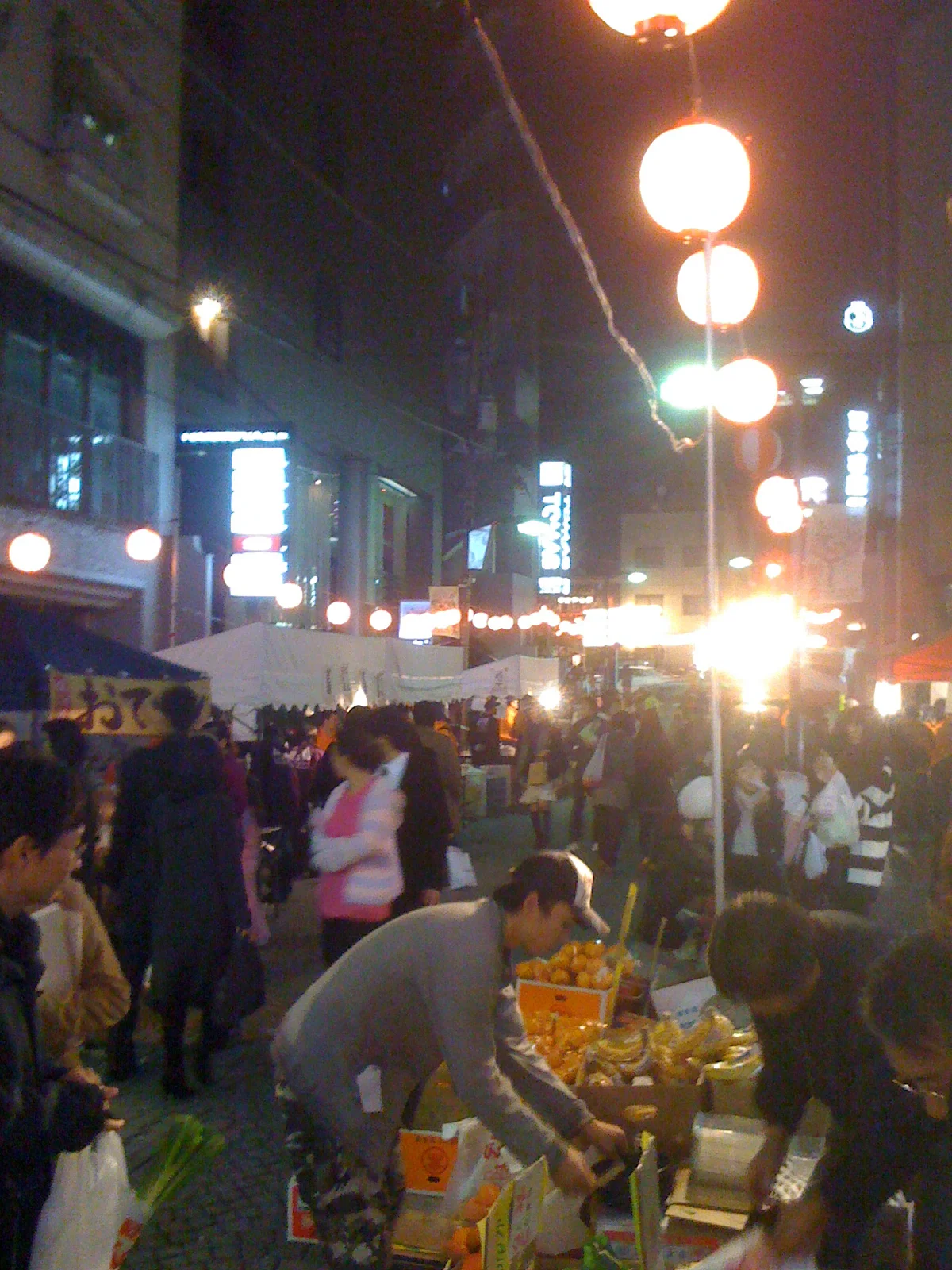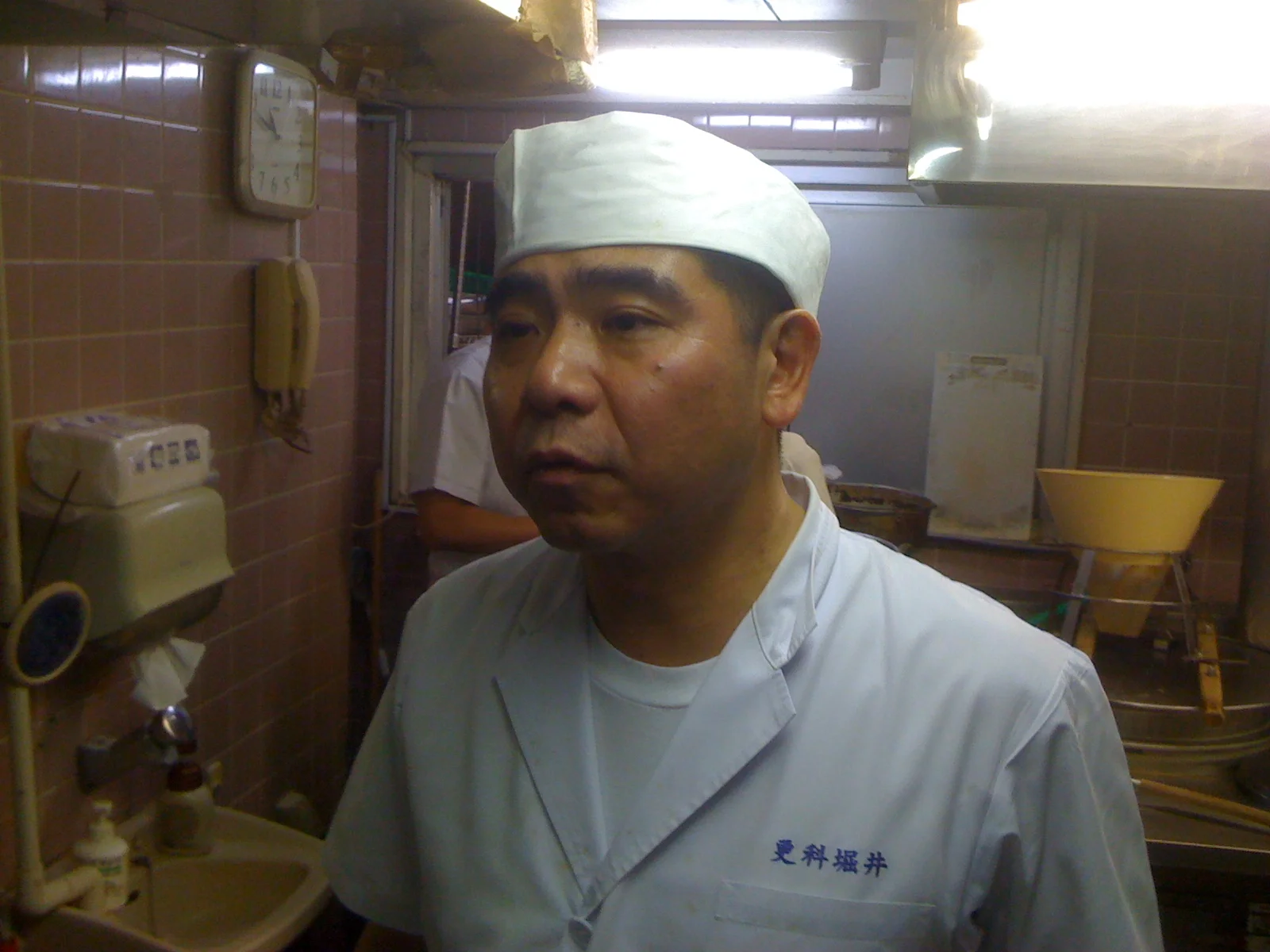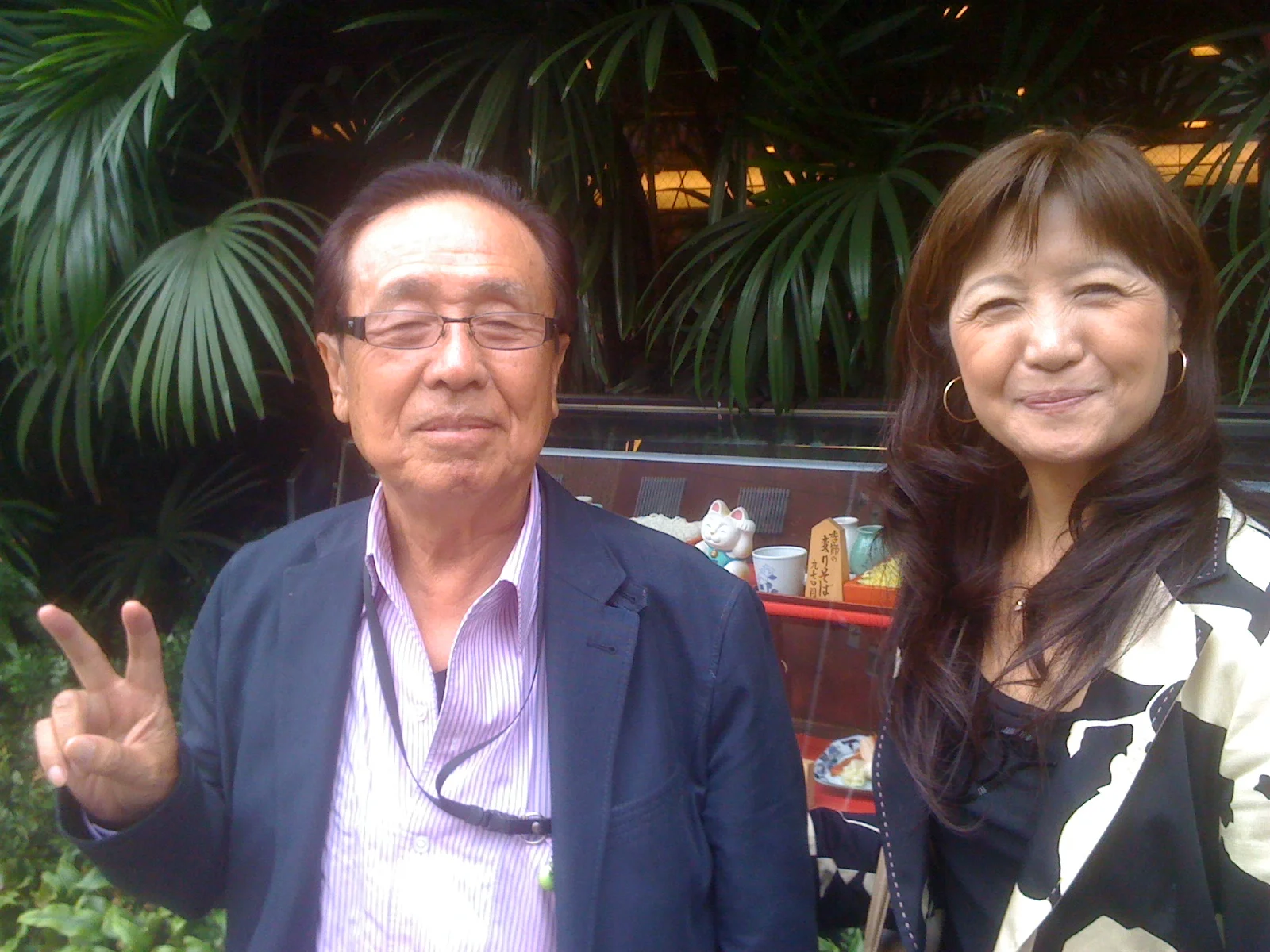Walking at a steady pace, none too hurried but not dawdling either, and making sure to wait for the lights to change to give the right of way to the cars at every intersection, one can walk from one end of the Azabu Juban shoten gai to the other in approximately six and a half minutes. Stretching in a shallow crescent from the Tokyo Metro station across from Ichinohashi up to the developed foothills of the sprawling, modern Roppongi Hills district, the street is a mere five hundred meters, a half a kilometer or slightly less than a third of a mile in length. Leaving the subway station and starting up the street one is heading in a roughly westerly direction, but by the end of the jaunt the orientation has shifted northward. At a sprint or on a bike, weaving your way through the crowds and the traffic, it can be covered in a minute or two. In a car, it’s more likely to take fifteen given the congestion, the frequent stopping of taxis to load and unload passengers, the delivery trucks and the traffic lights. But visiting the street from the confines of an automobile is not to be recommended. Apart from the fact that once you’ve arrived in the street in your vehicle you’ll be hard-pressed to find a place to park it, driving through the Azabu Juban shoten gai for a visit almost defeats the purpose: it is a street that needs to be experienced from the pavement up.
On a map, the district of Azabu Juban sits in the middle of a triangle formed by Chiyoda-ku (where the Imperial Palace is located), the Shinagawa wharf district on the Tokyo Bay, and the entertainment, shopping and business hub of Shinjuku. Of course, where one wishes to situate the center of anything in turn defines the orienting points one chooses on one’s personal map. Were I writing this story about Ginza or Ueno or Aoyama – or else some neighborhood or street in Istanbul or Paris or Dubai, where I’ve also lived – I’m sure I would have been able to find other geometrical shapes formed by other locations on the map that placed my chosen district right in the center. Such was the logic that allowed the artist Salvadore Dali, when he disembarked at the train station in Perpignan in the south of France to declare to the group of journalists who had gathered to meet him that the platform on which he was standing was in fact the center of the universe. So for the story I have to tell, Azabu Juban’s shoten gai will serve as the center, if not of the universe, at least of the world as I wish to describe it here.
The Azabu Juban shoten gai is both a street and a district – more of a zone, really; the Japanese term shoten gai (pronounced “show-ten guy”) means roughly “shopping area.” An American writer such as Sinclair Lewis might have called it "Main Street, Azabu", but perhaps in part in tribute to my British mother, I’ve chosen to call it for the purposes of this work, "The Azabu High Street." It is a place both eminently real, and one which exists through the prism of my observation and my imagination. Although everything I recount is strictly true, the Azabu High Street I will describe cannot be found on any map. By the same token, the people who inhabit these pages – the shop-owners, the diplomats, the entrepreneurs, the artists and entertainers – belong both to the real world, their world, and also to the Azabu High Street of my making. Their words are real, but I’ve borrowed their stories and the fragments of their lives to construct my own story, as well.
Whichever terminology applies, the shoten gai of Azabu Juban is very much defined by its contradictions and paradoxes. Although the concept of “center of town” is somewhat moveable in Tokyo, it would be difficult to find a street more centrally located; and yet in many respects and from many perspectives, the shoten gai of today still retains an almost provincial character. Despite the dramatic changes the street would undergo during the five years I lived there, a slight but dwindling majority of the buildings were still no more than three or four stories in height, many of them incorporating shop, storage area and residence for the business proprietor and his family. Many of these older buildings would be demolished and replaced, while I lived there, by multiple-story residential, retail and office towers. And, as the global economic crisis struck with devastating effect in 2008, while I was already working on my story of the street, a good number of these newer buildings remained empty, week after week, month after month, following their completion.
In the Azabu High Street, in the early years of this new century, musty old shops that looked like they were transported straight from the 1950s (or earlier), unchanged and mysteriously clinging to survival, sat next to the shiny avatars of the global economy such as Starbucks, Wendy’s and McDonald’s. In this respect the shoten gai was a striking mélange of the dynamic and the inert, the vibrant and the moribund, the modern and the quaint. The street boasted one of the oldest traditional public baths or onsens in Tokyo, as well as an outlet for the LA-based fashion brand American Apparel; it had a traditional Chinese medicine (or Kampo) pharmacy right down the street from a mass market drug and beauty outlet specializing in products from the cosmetics giant Shiseido; it had a traditional teashop just half a block from a new chain called Koots specializing in fancy green tea beverages (which itself replaced another old teashop at the same location); it had four noodle restaurants, at least one of them in operation for more than two centuries, and as many Western fast food franchises; it had a kimono shop and a boutique selling hand-me-down Channel and Louis Vuitton; it had dusty cavernous furniture shops with wares that had gone out of fashion thirty years before, and a glitzy pet spa frequented by young Japanese women with their designer dogs.
Across Tokyo or even across Japan for that matter, the juxtaposition of the old and the new, the traditional and the modern, the oriental and the occidental, is nothing unusual; it is one of the characteristics which lends Japan much of its charm. And yet, in Azabu Juban’s shoten gai it was the strangely harmonious concentration of these unrelated influences that gave the street its pleasingly eclectic air.
To read more of The Azabu High Street order the e-book from Amazon.



















